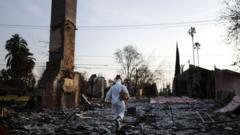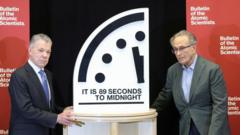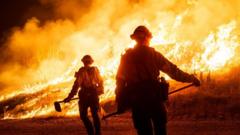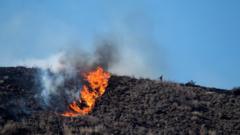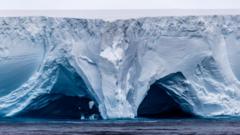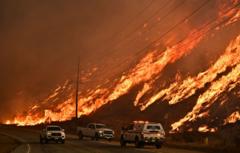The ongoing wildfire crisis in California has seen alarming intensification due to a combination of climate change and specific meteorological phenomena. High winds and a notable lack of rain are leading contributors to the raging fires in Southern California. Experts highlight that climate change has altered the natural environment, making these disastrous outbreaks more probable.
California Wildfires Escalate Amid Climate Change and Severe Weather Conditions
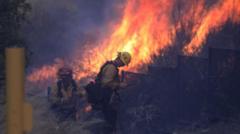
California Wildfires Escalate Amid Climate Change and Severe Weather Conditions
Experts warn that California's worsening wildfire situation is exacerbated by changing climate conditions, low rainfall, and high winds currently affecting Southern California.
Low rainfall and a fervent summer have left California particularly dry, raising concerns. The Santa Ana winds, which can gust at speeds of 60-70 mph, are currently wreaking havoc on the region, with meteorological conditions at their worst in over ten years. These dry winds not only fan fires but also affect their movement, pushing them from mountainous areas into populated valleys, creating new challenges for firefighting efforts. Climate researcher Daniel Swain from UCLA emphasized the increased wildfire ignition potential in these regions due to the proximity to human settlements.
California has recently emerged from a long drought, leading to robust growth in shrub and tree fuel, yet the situation this year has turned dire. With record low rainfall — downtown Los Angeles measuring only 0.16 inches since October — conditions are ripe for fire outbreaks. Climate scientists stress that the number of "fire weather" days is on the rise globally, facilitating longer and more severe wildfire seasons, while California's unique landscape further complicates these fires by allowing them to ignite and spread rapidly.
As fire seasons continue to intensify, researchers call for immediate attention to the intersection of climate change and wildfire management strategies. Although it remains unclear how much climate change has influenced these specific fires, there is a consensus on the urgent need for more in-depth analysis to understand the full impact moving forward.
California has recently emerged from a long drought, leading to robust growth in shrub and tree fuel, yet the situation this year has turned dire. With record low rainfall — downtown Los Angeles measuring only 0.16 inches since October — conditions are ripe for fire outbreaks. Climate scientists stress that the number of "fire weather" days is on the rise globally, facilitating longer and more severe wildfire seasons, while California's unique landscape further complicates these fires by allowing them to ignite and spread rapidly.
As fire seasons continue to intensify, researchers call for immediate attention to the intersection of climate change and wildfire management strategies. Although it remains unclear how much climate change has influenced these specific fires, there is a consensus on the urgent need for more in-depth analysis to understand the full impact moving forward.

